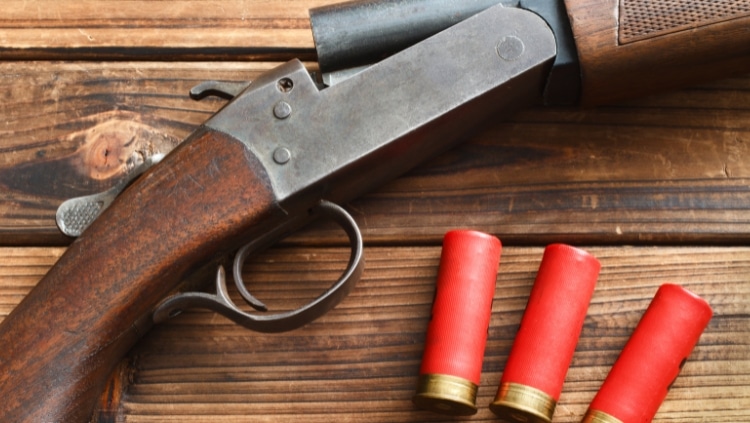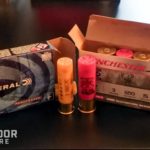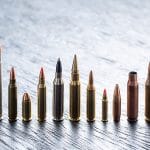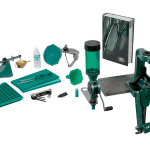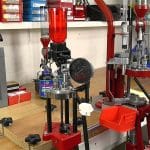Hunters have often led conservation efforts in the United States. We love animals and the outdoors, so we want to preserve it for future generations.
Back in the 1960s, we started to make an effort against the toxic effects of lead by removing it from gasoline. However, lead is also the most common projectile metal, especially in shotshells. And it turns out that lead from shot leeches into the groundwater and poisons the ducks, geese, and other animals we love to hunt.
So, in 1991, lead pellets were banned in waterfowl hunting and non-toxic shot became mandatory. Since then, duck populations have become healthier.
However, the most common non-toxic ammo uses steel pellets, which have the reputation of damaging old shotguns and aren’t as effective as lead.
So, what’s the best non-toxic ammo choice for your classic 1970s or older shotgun?
Steel shot isn’t recommended for vintage shotguns because they were manufactured with soft steel barrels that hard steel pellets can damage. Bismuth alloy is the safest non-toxic ammo for your old shotgun. Tungsten can be a good choice, but only when mixed with polymer.
Continue reading to learn more.
What is Non-Toxic Ammo?
Whether you’re hunting ducks, pheasants, or clay pigeons, the shotgun you’re using fires shot, tiny metal balls, also called pellets.
These pellets need to be dense to deliver enough kinetic energy to take down game animals. So for over a hundred years, the metal of choice has been lead.
However, lead is toxic. When lead particles are ingested, they are stored in the body and negatively affect every organ.
Blanketing marshlands and other waterways with lead shots is an excellent way to expose ducks to high levels of lead, which poisons them. This then poisons you when you eat the waterfowl you hunt.
Not every metal has this toxic property, though.
Non-toxic ammunition is made from metals (and sometimes polymers) that aren’t harmful to the body and won’t contaminate the environment.
Most non-toxic ammo is made from steel, an iron alloy. However, steel isn’t the only choice.
Steel Shot and Older Shotguns
In the 1970s, when the dangers of lead ammo became well known, ammunition manufacturers started producing steel ammo.
However, these steel pellets aren’t good for classic shotguns, so the manufacturers adapted and started producing steel-capable guns.
What’s the problem with steel shot? A shotgun’s barrel is made of steel, right?
The problem is that steel shot is harder than many historic shotgun barrels, especially the Damascus barrels found on some 19th-century guns.
Those barrels didn’t have to be made from hard steel. They were designed for use with soft lead. Hardening the barrel would have added to the gun’s cost.
The idea behind avoiding steel ammo is that hard steel shots can ding or gouge the interior of your softer steel barrel. This problem is mitigated because commercial steel ammo uses plastic wads that provide a cushion between the shot and barrel.
Because of this, some people fire light steel loads through their old non-Damascus barrel shotguns with no trouble. However, magnum loads can exacerbate this problem. And even if the steel pellets don’t harm your shotgun’s bore, they can damage the choke.
Steel pellets don’t compress nearly as well as lead, so they cause much higher pressures when the load is constricted as it passes through your shotgun’s choke.
This can lead to a ring bulge at the base of your choke.
I wouldn’t risk shooting steel hunting loads through a pre-’91 gun. Those were likely made with lead in mind and aren’t designed to stand up to high-velocity hard steel pellets.
Steel shot started to become popular in the 70s, so some (but not all) shotguns made between then and 1991 were manufactured with steel loads in mind. Plus, not every manufacturer noted on the barrel whether or not their guns were steel-shot rated!
So, the recommendation is to avoid using steel shot in pre-1991 guns.
Thankfully, there are other types of non-toxic ammo you can use.
Types of Non-Toxic Shotgun Ammo
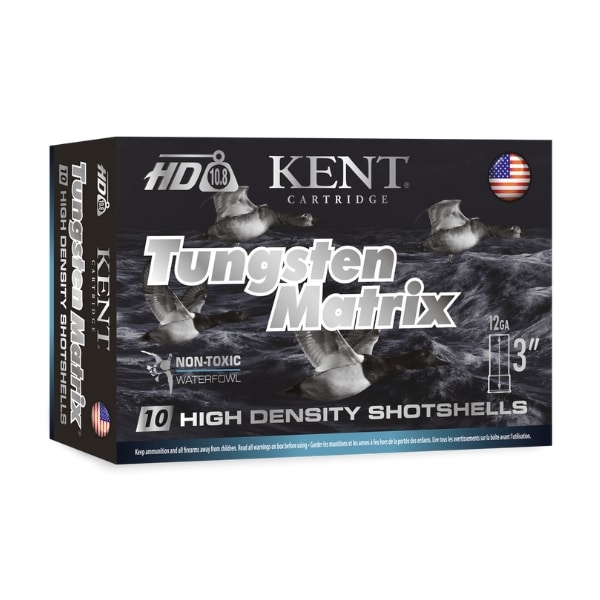
Most of the 14 types are alloys of several major metals: iron, tungsten, and bismuth.
These three metals have sufficient density for the ammo to be lethal. They’re alloyed with various other metals to improve characteristics or reduce expense because pure tungsten and bismuth are rare and expensive.
Here’s the full list, along with their densities in grams per cubic centimeters:
| Shot Type | Density |
|---|---|
| Bismuth-tin | 8.5-9.5 |
| Copper-clad iron | 8.3 |
| Corrosion-inhibited copper | 8.9 |
| Iron-tungsten alloy | 15 |
| Iron-tungsten-nickel alloy | 18 |
| Steel | 7.87 |
| Tungsten-bronze alloy | 12 |
| Tungsten-iron-copper-nickel alloy | 14-17.5 |
| Tungsten-iron-polymer | 8-12.5 |
| Tungsten-matrix | 10.5 |
| Tungsten-polymer | 17.5 |
| Tungsten-tin-bismuth alloy | 12 |
| Tungsten-tin-iron alloy | 11 |
| Tungsten-tin-iron-nickel alloy | 11 |
| Lead | 11.3 |
Lead is included for comparison. The densities given are approximate due to varying alloy ratios. Plus, some densities are proprietary. (I’m looking at you, Hevi-Shot!)
Since non-toxic shot can be split into three major categories, let’s look at those in detail.
Steel Non-Toxic Shot
Iron-based shot, typically steel, is the most economical, non-toxic shot available.
Unfortunately, it comes with several downsides.
The first is that iron is only about 2/3rds as dense as lead. This means that all other factors being equal, a steel shot hunting load will carry less kinetic energy at the muzzle. Worse still, it’ll bleed velocity faster, further reducing knock-down power.
You can compensate for this by using heavier loads with larger pellets plus more powder. Your shoulder won’t thank you, however!
Also, steel is much harder than lead, so it has a harder time passing cleanly through tighter chokes. Firing steel shot through a full choke can blow out your pattern. But that’s not all.
As mentioned before, steel pellets are harder than many older shotgun barrels.
Avoid steel shot unless you’re using a modern shotgun or know your classic shotgun is rated to handle steel loads.
Tungsten Alloy Non-Toxic Shot
Tungsten is almost a wonder metal when it comes to shotgun hunting. It’s one of the few denser elements than lead, giving it great ballistic potential.
However, it’s an expensive and rare element, so you won’t find any shot that’s 100% tungsten. It’ll always be alloyed with something else.
You’ll find it alloyed with other metals, though some manufacturers mix it with polymers instead.
Still, a tungsten shot is non-toxic and will almost always be as dense as lead or even denser, so you can use the same loads as before.
However, tungsten sometimes has the same problem as steel shot of being harder than lead, rendering it incompatible with old shotguns.
Annoyingly, this isn’t always the case, so you can’t just look at the word “tungsten” and know if it’s safe for your heirloom shotgun.
The tungsten non-toxic shot mixed with polymer, such as Kent’s Tungsten Matrix and Hevi-Shot Classic Doubles, tend to be classic-shotgun-safe.
If you’re not sure, then there’s a safer option.
Bismuth Alloy Non-Toxic Shot
Bismuth isn’t as dense as lead, but it’s denser than iron.
More importantly, it’s softer than either iron or tungsten. In fact, it’s about as soft as lead.
This makes the various bismuth shot offerings perfect when you want to grab your classic shotgun for some waterfowl hunting. It’s what I use.
Bismuth does have the same “downside” as tungsten in that it’s much more expensive than steel.
It’s also not quite as long-ranged and hard-hitting as good ol’ lead, but it’s close enough for most hunters.
What About Copper and Nickel Plated Shot?
A common question is whether plating makes steel shot dangerous for old guns. Or if plating makes lead shot dangerous for the same guns.
Basically, any plating on shot pellets is there for corrosion resistance and friction reduction. It doesn’t affect the shot’s underlying properties.
I recommend avoiding steel shot with older hunting shotguns, even when plated.
How to Choose the Right Non-Toxic Shot for Your Old Shotgun
When looking for the best non-toxic ammo, you want an intersection of range, knock-down power, and economy.
Plus, it has to be safe for your gun!
While light steel loads may be safe for your older gun, they won’t be effective hunting loads.
That said, if you have an older trap shooting gun and your shotgun club allows (or requires!) steel shot, you should be fine so long as you avoid heavy target loads and don’t fire them through any choke more restrictive than a modified choke.
When it comes to hunting, bismuth shot is the safest non-toxic option.
You’ll get almost as much performance with a bismuth-alloy shotshell as you’d get with the same lead-pellet load without polluting waterways.
Specific tungsten loads are a good option, too, when you want to maximize your chances.
Be careful with the tungsten ammo you choose, though. Stick to tungsten pellets made with polymer binders. Otherwise, the tungsten alloy may be too hard for your shotgun’s choke.
I like to load my shells with a bismuth alloy such as RotoMetals Bismuth Shot.
Hevi-Shot’s Hevi Bismuth is a common non-toxic waterfowl hunting choice.
Conclusion
Though it has good physical characteristics as a projectile, lead is a toxic element that poisons animals and people when scattered about the environment.
This is why the federal government mandated non-toxic shots when hunting waterfowl in 1991. It’s also why I’ve swapped to a non-toxic shot for all my shotgun hunting.
However, the most common non-toxic ammo is made with steel, which can damage vintage shotguns.
Thankfully, you can find bismuth-alloy and tungsten-matrix shotshells that are not only safe for your classic shotgun but are also devastatingly effective hunting loads!
FAQs
What is Non-Toxic Shot Made From?
Non-toxic shot is made from metals that won’t poison animals and people if particles from the pellets are eaten.
Steel, bismuth, and tungsten are the most common non-toxic metals used.
Which Non-Toxic Shot is Safe for Older Shotguns?
Bismuth is the safest shot material for older shotguns.
Tungsten can be safe, but you need to avoid pellets made from tungsten that have been alloyed with iron. That ammo will have the same dangers as steel.

